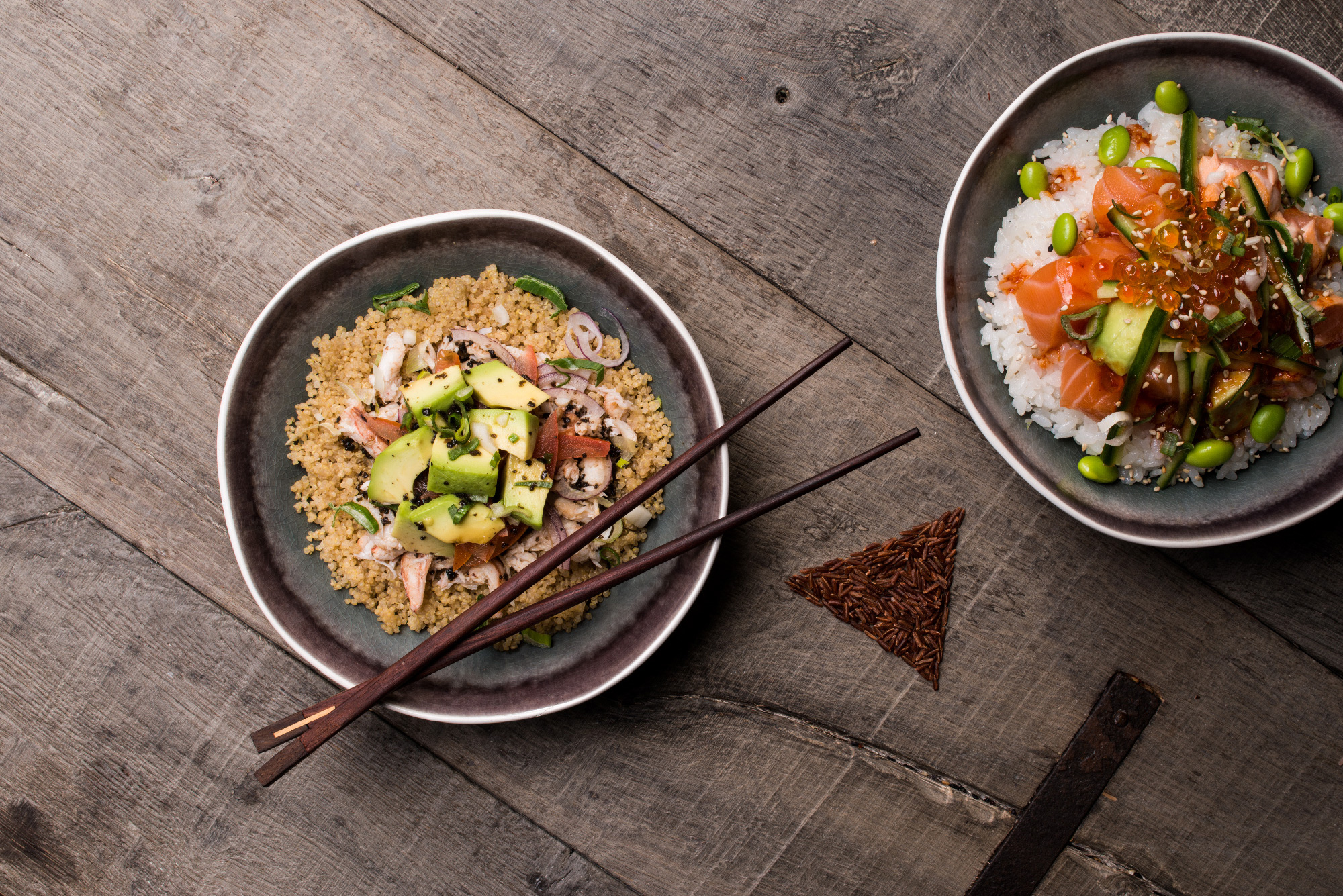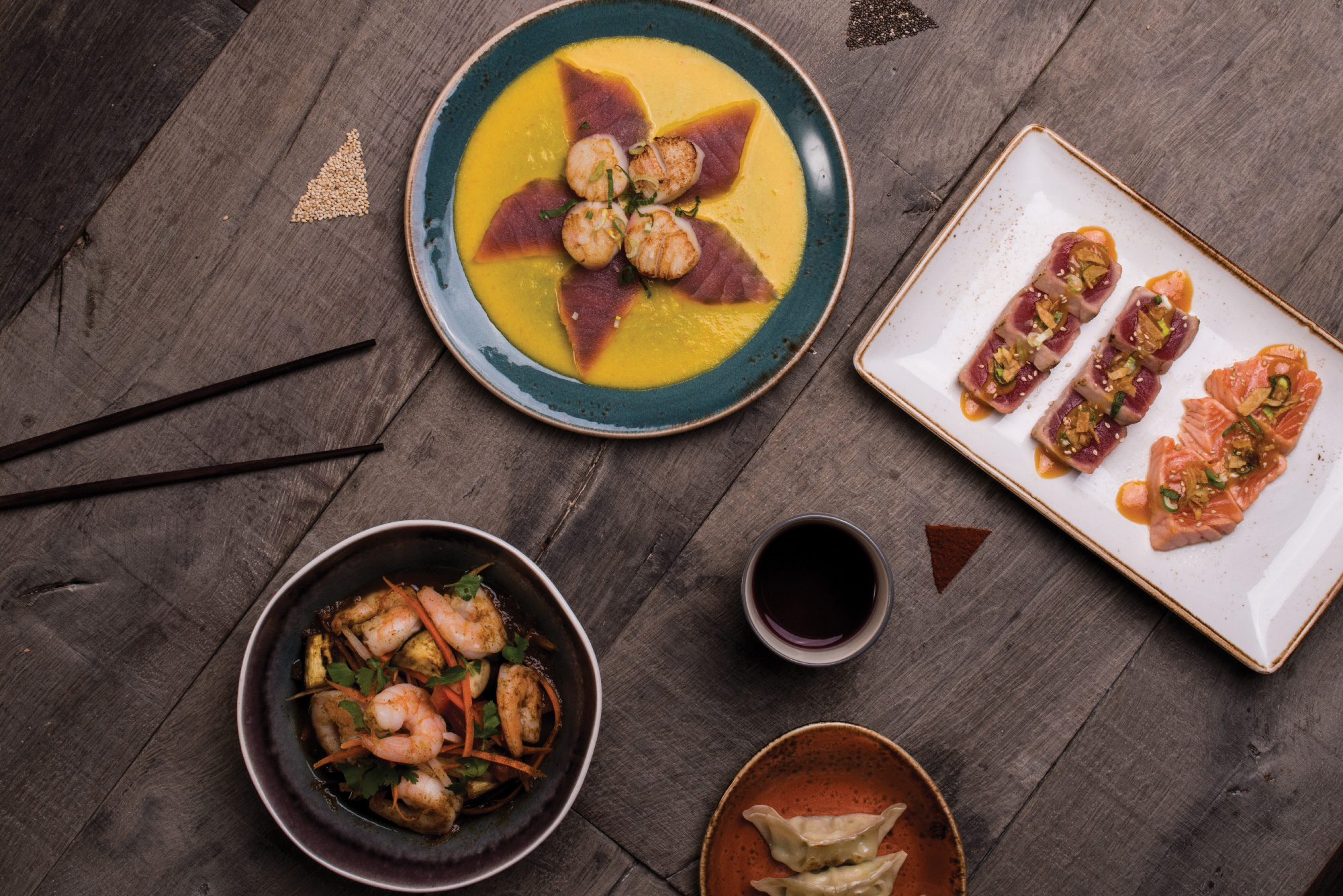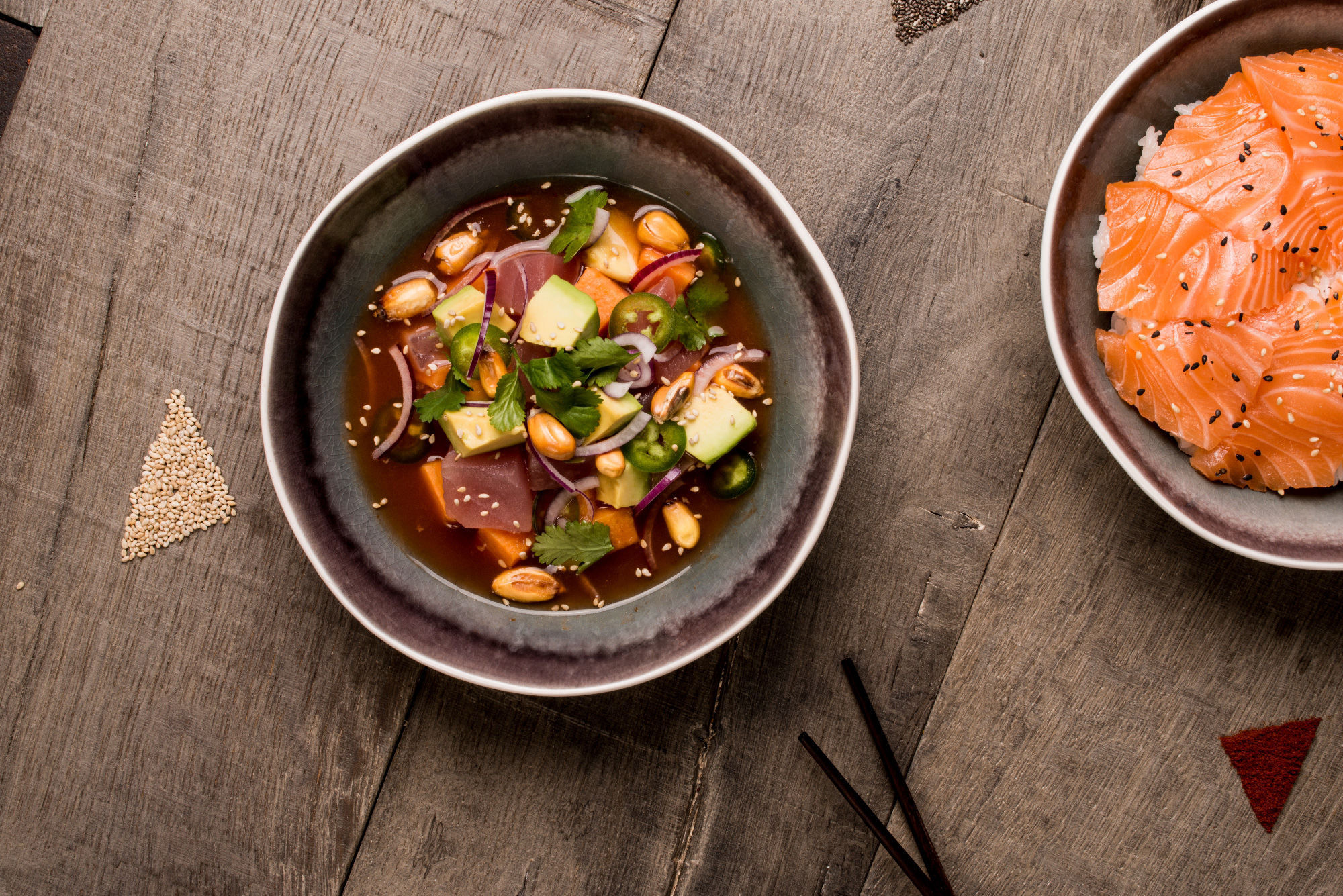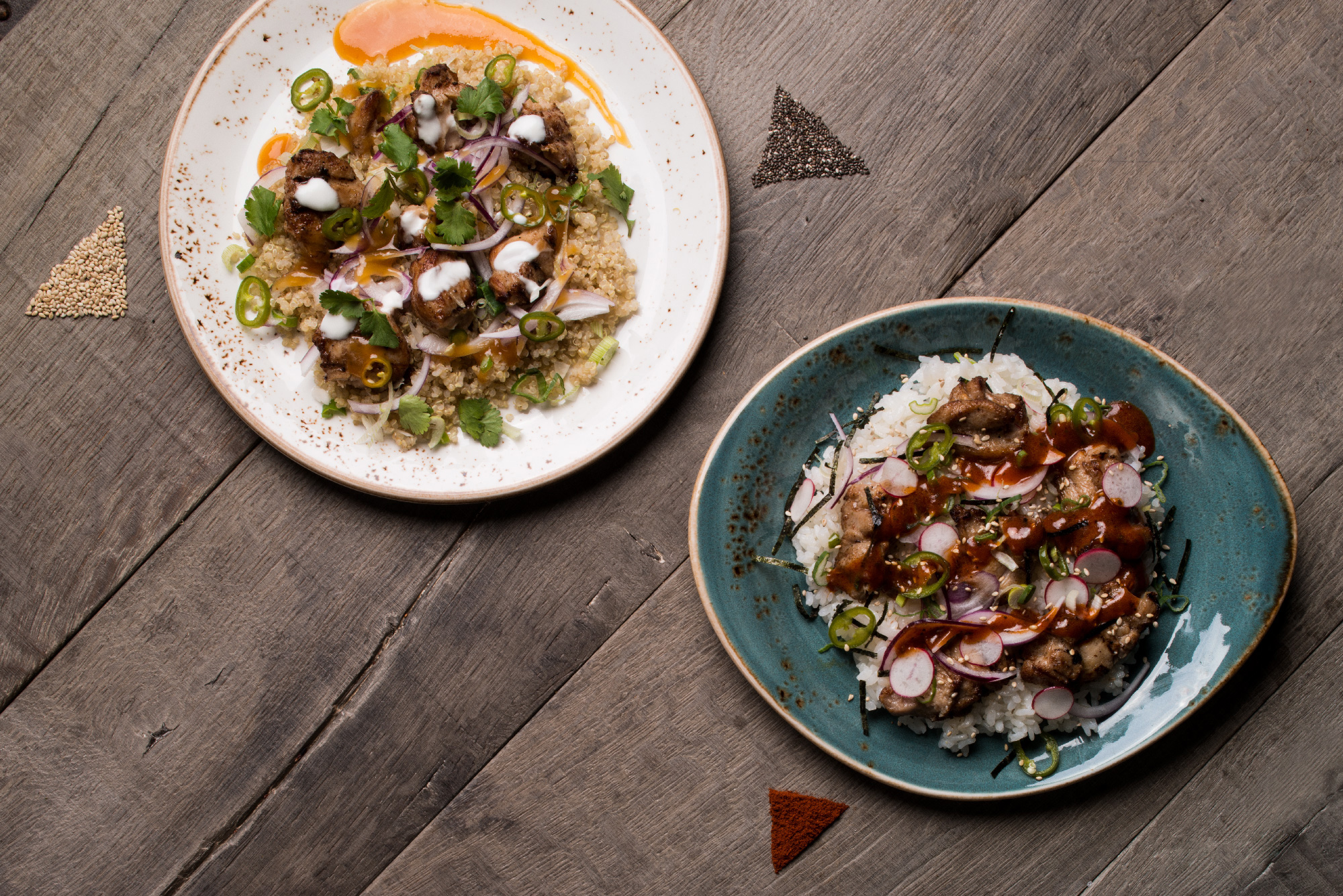
Inventive, tasty and spicy, Nikkei cuisine seduces more and more followers and gourmets every day. A balanced mix of Japanese and South American cuisine, it has been enriched over the decades with flavors and textures that thrill the taste buds.
WHAT IS NIKKEI CUISINE?
Contrary to popular belief, Nikkei cuisine is not just a healthy mix of Japanese and Peruvian or Brazilian cuisine. Even if many chefs such as Tsuyoshi Murakami, Adriano Kanashiro, Mitsuharu Tsumura, Hajime Kasuga, Shin Koike highlight it in their respective countries, Nikkei cuisine is in fact the cuisine of Japanese emigrants wherever they are in the world according to Luiz Hara, Brazilian chef of Japanese-Italian origin. The word Nikkei comes from the word nikkeijin which means a person of Japanese lineage. This inventive and healthy cuisine originating from the Japanese diaspora has adapted and integrated in its bases ingredients from the countries where the Japanese expatriates settled. Peru and Japan being face to face, separated by the Pacific, the dishes of both countries often contain the same fish. In Peru, the Nikkei cuisine revisits without complex the ceviche, a true national culinary symbol, and has brought other techniques of fish preparation such as sushimi. Agricultural country and heir of a long culinary tradition, this country became the crucible of this gastronomy of a kind with share. Peru has brought more textures and spicy flavors to a cuisine at the height of technicality. As for Brazil, today it has one of the largest Japanese communities in the world, mainly concentrated in São Paulo, especially in the Liberdade district and in Paraná. There are between 1.3 and 1.5 million inhabitants of Japanese origin in the country of the caipirinha. The Nikkei fusion cuisine is inspired by the same philosophy as the Japanese washoku, now a cultural heritage of humanity since 2013.

Tuna and scallop tiradito with jalapeño pepper and passion fruit sauce, Alta salad with shrimp and eggplant and spici amarillo sauce, tuna tataki are to be discovered from May 2017 at Coté Sushi.
THE ESSENTIALS OF NIKKEI CUISINE
The ingredients needed to make Nikkei cuisine are so numerous that making a list would be exhaustive! Many Japanese, Peruvian, Brazilian and European products are used in Nikkei recipes. Sushi rice is a vinegar rice that requires special preparation in an unvarnished wooden container. Never in a glass, stainless steel or ceramic bowl! It is used to make Nikkei style sushi. Another essential element: tempura. Introduced in Japan by the Portuguese who landed on the Japanese coast in the 16th century, these fried foods are a must in Nikkei cuisine but also more globally in Japan. Very similar, pastéis are not the delicious little flans typical of Portuguese cuisine but a lighter and crispier version of Spanish empanadas. Made of a dough as thin as a sheet of paper, they are filled with a stuffing always consisting of a cheese and a meat (beef, ham or pork, chicken). Dashi, a basic broth made of dried bonito and kombu, is a mainstay of both Nikkei and Japanese cuisine. If Nikkei cuisine uses many of the same sauces and marinades as those of the land of the rising sun, such as ponzu sauce, coriander oil, wasabi lemon cream, sesame vinaigrette, soy sauce, one in particular stands out, leche de tigre (or tiger milk). In Peru, there are as many leche de tigre as there are Nikkei cooks. Generally composed of lime juice, salt, chili and herbs, this marinade is used to cook the national ceviche or tiraditos. It is sometimes enhanced with small pieces of fish.

Ceviche and chirashi are the great classics of Nikkei cuisine.
WHERE TO EAT NIKKEI CUISINE IN FRANCE ?
Coté Sushi whose baseline is « Nikkei from Peru » is a very good approach to Nikkei cuisine. The Japanese cuisine takeaway chain, which has existed since 2008 but turned more specifically to this fusion food in 2014, offers a wide menu with exquisite flavors. You can find the classics of Japanese cuisine in Europe (maki, sushi, roll’s, yakitori…) but also the inescapable Nikkei style: tiraditos (very close to ceviche), meat or fish donburi, chicken or salmon quinoa bowls, shrimp or salmon tartars, ceviches… Sushi is enjoyed Nikkei style with ponzu jelly and shiso leaves as a topping. Some maki are topped with ají amarillo sauce, a classic Nikkei style. Other recipes surprise the taste buds like these Crispy, fried rice rolls tempura style, or the Broadway Chicken Tempura, a maki with chicken tempura coated with avocado, or the sambas pescados. Other places of Nikkei gastronomy in France: Uma and Matsuhisa Paris.

A traditional Japanese dish, donburi consists of a large bowl of rice with a variety of toppings including meat.
TO LEARN MORE ABOUT NIKKEI CUISINE
If there is only one book to own, it is « Cuisine Nikkei, La fusion food du Japon et de l’Amérique du Sud » by Luiz Hara published by Prat. A real bible with many explanations and details to reproduce at home this exotic cuisine. The author was born in Brazil of Nikkei parents but has lived in London since the age of 19. Raised by his grandmother, he acquired an immoderate taste for cooking at a very young age, which he willingly shares through his books and his blog « The London Foodie ». Each recipe (there are 100 in all) is very detailed. One part is entirely devoted to the basics of Nikkei cooking with a meticulous description of sauces, marinades, condiments and Asian, Peruvian, Brazilian and European ingredients. In short, a concentrate of happiness and expertise to keep as a bedside book! 256 pages, 25,95€.
Photo copyright: Coté Sushi